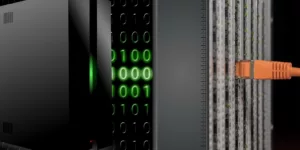TechTalk Daily

By Rob Enderle
AMD’s historic place in the microprocessor ecosystem is as a second source for Intel. Some of AMD’s biggest problems have resulted from its being unwilling to remain second tier and Intel’s understandable reluctance to allow it to rise to peer level. AMD’s prior push to rise to peer status in the early 2000s ended badly because of AMD execution issues and Intel moving aggressively to prevent a favorable AMD outcome.
However, AMD has significantly improved its leadership (according to Mercury Research) and execution over time, while Intel’s prior CEO defunded much of Intel’s microprocessing efforts in what seemed to be a misguided though initially successful strategy to increase short-term profitability at the expense of long-term viability. Pat Gelsinger, who is arguably the only person on the planet capable of turning Intel around, is struggling to do so, so the latest announcements of layoffs and salary cuts suggest it still isn’t going well.
The latest Microprocessor Report from Mercury Research indicates that AMD has been able to maintain and build on 25% market share for a sustained period. This means that, regardless of short-term events like the pandemic, AMD has demonstrated it can both take share and hold it, moving it from Intel subordinate to Intel peer. This is an impressive piece of work by AMD’s CEO Lisa Su and her core team, including folks like Victor Peng, Rick Bergman, Mark Papermaster, and Forrest Norrod.

I think it is interesting to note that AMD’s competitive performance, while powerful in servers, was first most noticeable in workstations. What I find particularly fascinating is that with Threadripper, which initially was just kind of a performance experiment in the consumer space, became the must-have part for high-performance workstations almost overnight and allowed Lenovo to take the undisputed leadership in this segment, forcing Dell, which is far more tightly tied to Intel, to follow them to hold onto its remaining share.
What I still find fascinating is that it was NVIDIA with its RTX 4090 part that executed a similar strategy with graphics, but that didn’t impact its workstation business, and AMD hasn’t done something similar on the graphics side. This suggests there is a missed opportunity that either vendor may eventually embrace.
Read the full article at TGDaily.com >